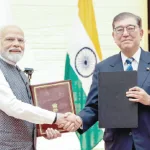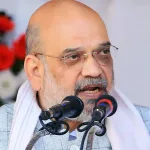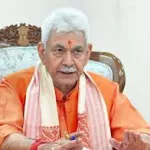With the swearing in of the new council of Ministers, the new Lok Sabha has been constituted. This time 72 MPs have taken oath that includes 61 from the BJP and 11 from alliance partners that constitute the NDA. It includes representation from all corners of the country as well as social groups. It has 27 ministers from Other Backward Classes, 10 from Scheduled Castes, 5 from Scheduled Tribes and 5 from minorities. A record 18 senior Ministers will be heading ministries. Modi Cabinet 3.0 includes 43 ministers who have served 3 terms or higher in Parliament, with 39 having been ministers in the Government of India before. The ministers also bring a wealth of experience at the state level. The Cabinet includes multiple former chief ministers and 34 ministers who have served in State legislatures and 23 having worked as ministers in States. The composition of the council of ministers clearly reveals that there has been an effort to integrate experience and representation from all corners of India. The mandate that has been given by the Indian voters in the Lok Sabha Election 2024 needs a clinical analysis. Though they have not given the absolute majority to the BJP on its own, they have enabled the NDA Alliance to form the government. Not only that, the Indian electorate has also done a balancing act by empowering the INDI Alliance appreciably so that a system of checks and balances is put in place. Many incumbent ministers of the NDA have lost the election. It signifies alertness on the part of voters who have given credence to the performance. Though there is no doubt that Modi appeal has been the cornerstone of the Lok Sabha Elections from 2014 to 2024.But the electorate have posed their faith in Narendra Modi. At the same time they have done a kind of an appraisal by giving a mandate that gives the opposition a hope. Indian voter wants performance and redressal of the issues that engulf the nation. To govern a nation like India that has geographical, demographic and cultural diversity; it needs a comprehensive policy making. Development one section at the cost of another can prove counterproductive. The previous two regimes of the BJP led NDA have done immensely well on the front of foreign policy and national security. But there has been some gap as far as the redressal of the issues of the various sections of the people is concerned. Side-lining those issues have led to the loss in terms of seat tally. Both BJP and NDA will have to put their heads together to do the course correction. So that they can improve their performance in various sectors that have not been factored in.Moreover, it has to be kept in mind that the third term to the BJP led NDA will have a different approach. There is will to be more introspection than before. As the decision making on crucial issues will not be easy as it was in the previous regimes. After all, the numbers matter in democracy when it comes to policy making and the implementation of plans. BJP has been in coalition politics for a considerable period of time. They have witnessed the coalition paradox and dilemma during the Atal Bihari Vajpayee years. BJP had to keep its core agenda on the back seat and give credence to consensus. The nation needs a stable and effective government at the centre. Narendra Modi has the ability and conviction to deliver. He has proven that in his previous two terms as the Prime Minister. But then his party BJP had the numbers to form the government on its own. This time BJP does not have the numbers that can take it to simple majority on its own. It has to bank upon its alliance partners. Modi’s ability to lead will surely be tested this time when the political arithmetic is quite different. Only time will tell what is in store for the BJP led NDA in this third term.
BJP led new NDA Cabinet

Sign Up For Daily Newsletter
Be keep up! Get the latest breaking news delivered straight to your inbox.
By signing up, you agree to our Terms of Use and acknowledge the data practices in our Privacy Policy. You may unsubscribe at any time.
Leave a Comment Leave a Comment
Stay Connected
Latest News
Recent Posts
- Japan to invest 10 trillion yen in India over next one decade
- 50,000 ‘skilled, semi-skilled’ Indian personnel to be sent to Japan: MEA
- HM Shah likely on two-day visit to Jammu from tomorrow
- LG admin forms committee to investigate Shri Mata Vaishno Devi landslide
- All 34 victims identified, bodies handed over to families







